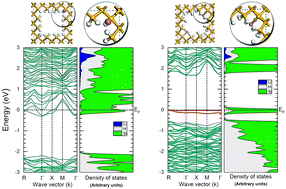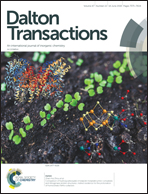Lithium effect on the electronic properties of porous silicon for energy storage applications: a DFT study
Abstract
Theoretical studies on the effect of Li on the electronic properties of porous silicon are still scarce; these studies could help us in the development of Li-ion batteries of this material which overcomes some limitations that bulk silicon has. In this work, the effect of interstitial and surface Li on the electronic properties of porous Si is studied using the first-principles density functional theory approach and the generalised gradient approximation. The pores are modeled by removing columns of atoms of an otherwise perfect Si crystal, dangling bonds of all surfaces are passivated with H atoms, and then Li is inserted on interstitial positions on the pore wall and compared with the replacement of H atoms with Li. The results show that the interstitial Li creates effects similar to n-type doping where the Fermi level is shifted towards the conduction band with band crossings of the said level thus acquiring metallic characteristics. The surface Li introduces trap-like states in the electronic band structures which increase as the number of Li atom increases with a tendency to become metallic. These results could be important for the application of porous Si nanostructures in Li-ion batteries technology.



 Please wait while we load your content...
Please wait while we load your content...